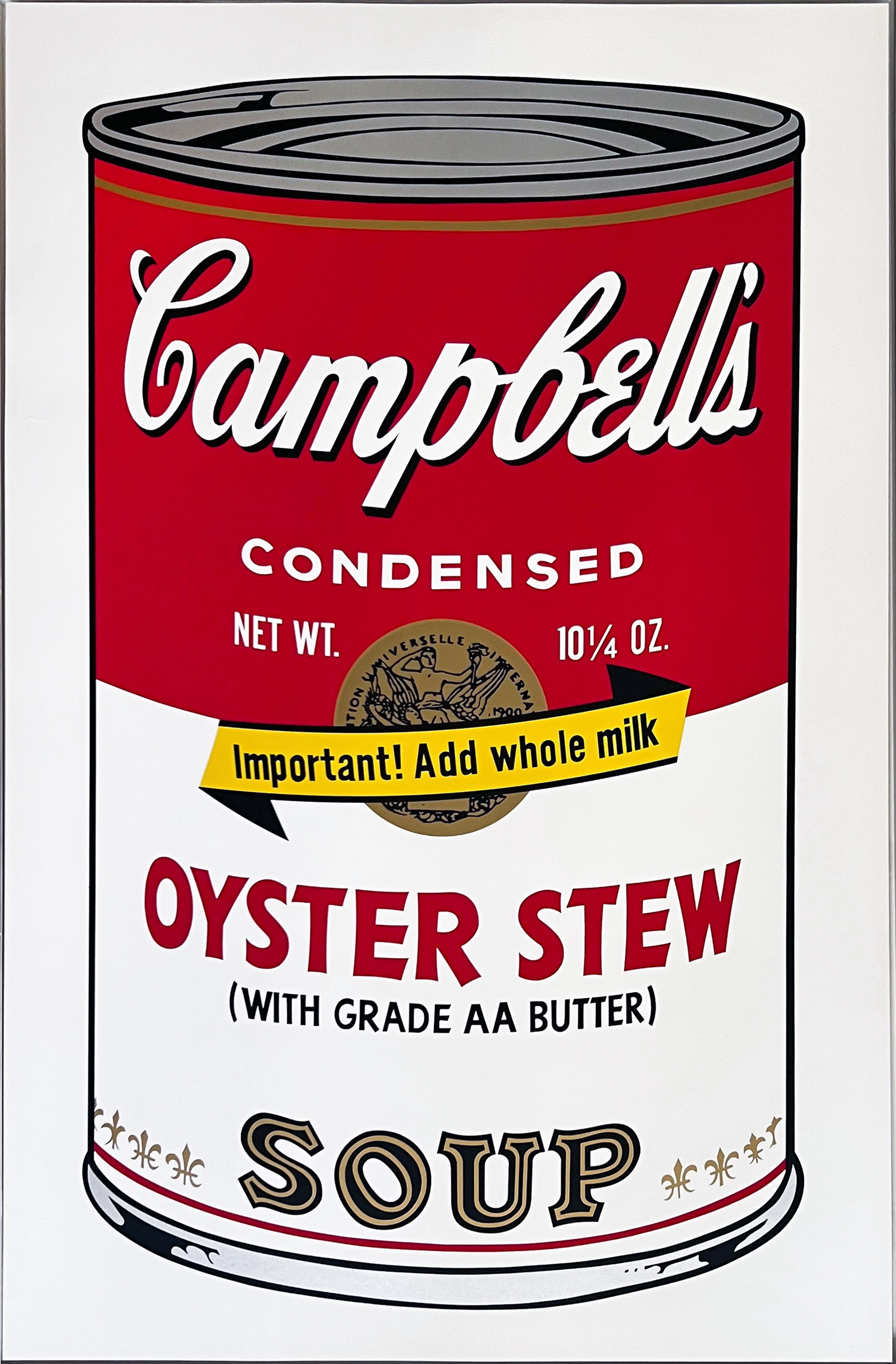Andy WarholCampbell's Soup II:
Campbell's Soup II:
Oyster Stew
(F&S II 60), 1969
color screenprint on smooth wove paper
35 x 23 inches
edition of 250, this impression aside from regular numbered edition
Hand signed "Andy Warhol" in black ball-point pen on verso
With the 'Andy Warhol Art Authentication Board, Inc.’ ink stamp and Unique ID Number in pencil on verso
printed by Salvatore Silkscreen Co., Inc.
published by Factory Additions, New York
Unframed, museum quality condition, never hinged, framed or matted
Provenance
David Whitney, New York
Brooke Alexander Gallery, New York
Literature
Frayda Feldman and Jorg Schellmann, Andy Warhol Prints: A Catalogue Raisonne: 1962-1987, Fourth Edition, D.A.P., New York, 2003, Catalogue Reference F&S II. 60, another impression reproduced page 75, in color.
Selected Museum Collections
Museum of Modern Art, New York
Metropolitan Museum of Art, New York
University of Mississippi Museum, Oxford
Walker Art Center, Minneapolis
McNay Art Museum, San Antonio
St. Louis Art Museum, St. Louis
35 x 23 inches
edition of 250, this impression aside from regular numbered edition
Hand signed "Andy Warhol" in black ball-point pen on verso
With the 'Andy Warhol Art Authentication Board, Inc.’ ink stamp and Unique ID Number in pencil on verso
printed by Salvatore Silkscreen Co., Inc.
published by Factory Additions, New York
Unframed, museum quality condition, never hinged, framed or matted
Provenance
David Whitney, New York
Brooke Alexander Gallery, New York
Literature
Frayda Feldman and Jorg Schellmann, Andy Warhol Prints: A Catalogue Raisonne: 1962-1987, Fourth Edition, D.A.P., New York, 2003, Catalogue Reference F&S II. 60, another impression reproduced page 75, in color.
Selected Museum Collections
Museum of Modern Art, New York
Metropolitan Museum of Art, New York
University of Mississippi Museum, Oxford
Walker Art Center, Minneapolis
McNay Art Museum, San Antonio
St. Louis Art Museum, St. Louis





